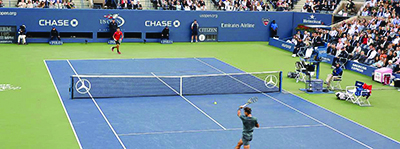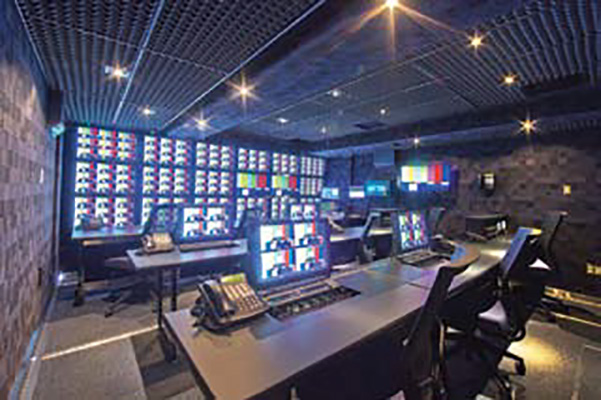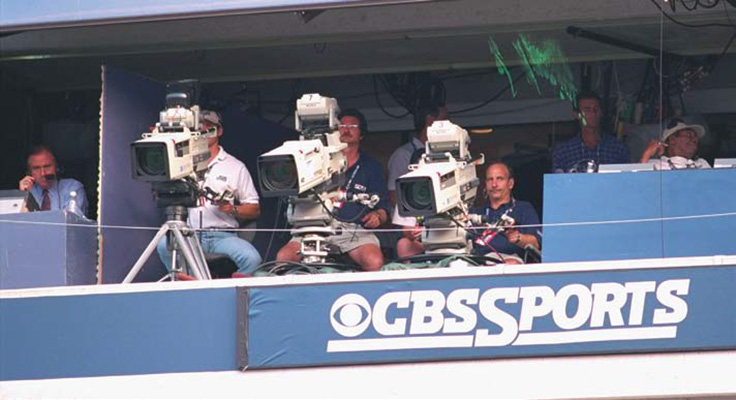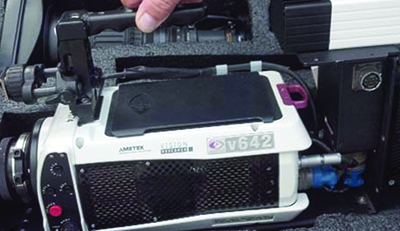CBS Run-up the US Open

FLUSHING MEADOWS, N.Y.—After nearly five decades, 2014 marks the last year that CBS Sports broadcasts the US Open tennis tournament. Coverage of the event—which takes place at the USTA Billie Jean King National Tennis Center, August 25 to Sept. 6—will be turned over to ESPN in 2015, which will add the broadcast rights to its existing cable carriage rights, having paid $825 million over 11 years for the privilege.
That’s next year. Right now, all Ken Aagaard cares about is getting the 2014 US Open right. “We are the host broadcaster for the event,” said Aagaard, executive vice president, engineering, operations and production services for CBS Sports. “We provide the content for the U.S. and the rest of the world—including the content currently seen on ESPN.”
Covering the Courts
F&F GTX-17 (Court 1) includes:
• Grass Valley Kayenne K-Frame switcher
• 12 six-channel EVS LSM XT3 video file servers with 35 replay output channels
• 3 HD VTRs
• 3 Vizrt graphic generators
• 1 telestrator
• 1 Goodyear blimp camera
• 17 cameras, mostly Sony HDC-2500s:
° 7 fixed (hard)
° 1 hard Super Slo Mo
° 1 RF heldhand
° 2 cabled handheld
° 1 talent
° 1 jib
° 3 robotic
° 1 high frame rate

F&F Productions’ GTX-17F&F GTX-16 (Court 2) includes:
• Grass Valley Kayenne K-Frame switcher
• 5 six-channel EVS LSM XT3 video file servers with 14 replay output channels
• 3 HD VTRs
• 13 cameras, mostly Ikegami 79ECs:
° 5 fixed (hard)
° 1 hard Super Slo Mo
° 4 cabled handheld
° 1 talent
° 1 jib
° 1 robotic
NEP Skyline (Court 3) includes:
• Grass Valley Kalypso Switcher
• 3 six-channel EVS HD video servers with 8 replay output channels
• 6 Sony cameras configured as 4 hard cameras and 2 cabled handheld cameras
• 1 Bexel Super Slo Mo camera
• 2 Robovision POV cameras
NEP ST27 (Court 5), SS16 (Court 11), ST28 (Court 13), and SS11 (Court 17) all include:
• 4 hard cameras
• 1 six-channel EVS server with six output channels
• 1 Robovision POV
The professional video industry's #1 source for news, trends and product and tech information. Sign up below.
CBS will also make use of NEP’s NCPVIII to support fountain/arrivals and talent locations (ITV coverage) for multiple broadcasters, as well as NEP’s ESU for signal distribution and CBS transmission.

CBS Sports will cover Arthur Ashe stadium with 17 cameras. According to Aagaard, CBS is starting its coverage a few days earlier, to take in the qualifying rounds for ESPN and the US Tennis Association’s online video streaming. “We have added cameras at another court—Court 5—to ensure coverage of all the players taking part,” he said.
A BIG INSTALLATION
To cover the 2014 event, CBS has marshaled seven mobile production units from F&F Productions and NEP Broadcasting. These will be deployed in three locations, about 500 feet apart from each other, on the USTA Billie Jean King National Tennis Center’s 31 court (19 outdoor, 12 indoor) campus. There will also be 15 sixty-foot house trailers onsite, to provide additional control, graphics, communications and equipment rooms; plus office space and catering.
Including the camera on the Goodyear blimp, CBS Sports will have an army of cameras covering the US Open this year. In general, these will be fixed HD studio cameras, supplemented by handheld cabled/RF, Super-Slo Mo, jib, and robotic cameras (see sidebar).
Overall, there will be about 300 people working on CBS Sports’ US Open coverage team, but only 16 will be actual CBS Sports personnel. The rest will be freelancers, most of whom have 10 years’ experience or more covering the US Open.

CBS Sports will use the Vision Research Phantom 642 for hi-def slow-motion coverage of the US Open.THEN THERE’S LOGISTICS
Given that CBS Sports is working with a very experienced crew, Aagaard isn’t worried about making the broadcast go right. His 300 people know what they’re doing.
“What does concern me are the logistics of getting people around the USTA Billie Jean King National Tennis Center,” he said. “There’s been a lot of construction going on, and I am concerned that this could delay us in moving crews around; not to mention our proximity to New York City and its traffic.”
Nevertheless, one can expect CBS Sports’ final US Open to be a smoothly-produced, top-notch broadcast. With 46 years of covering this tennis classic under its belt, CBS Sports has got it down pat.
CBS will broadcast nearly 40 hours of the tournament, including Finals Weekend. ESPN is slated to provide 100 hours of coverage during the two weeks and Tennis Channel will broadcast more than 250 hours of coverage, including nearly 70 hours live.
James Careless is an award-winning journalist who has written for TV Technology since the 1990s. He has covered HDTV from the days of the six competing HDTV formats that led to the 1993 Grand Alliance, and onwards through ATSC 3.0 and OTT. He also writes for Radio World, along with other publications in aerospace, defense, public safety, streaming media, plus the amusement park industry for something different.

